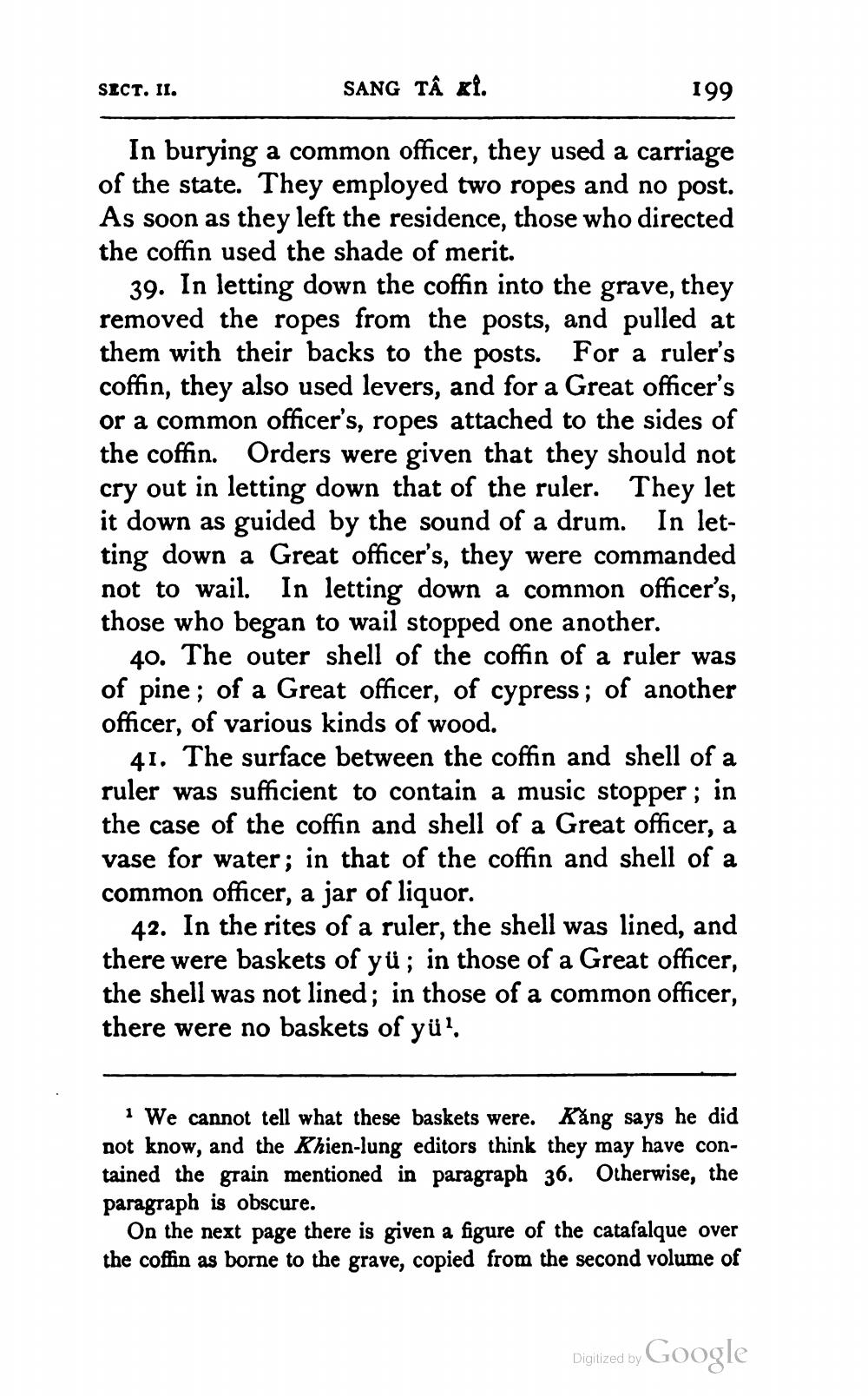________________
SECT. II.
SANG TA KỲ.
199
In burying a common officer, they used a carriage of the state. They employed two ropes and no post. As soon as they left the residence, those who directed the coffin used the shade of merit.
39. In letting down the coffin into the grave, they removed the ropes from the posts, and pulled at them with their backs to the posts. For a ruler's coffin, they also used levers, and for a great officer's or a common officer's, ropes attached to the sides of the coffin. Orders were given that they should not cry out in letting down that of the ruler. They let it down as guided by the sound of a drum. In letting down a Great officer's, they were commanded not to wail. In letting down a common officer's, those who began to wail stopped one another.
40. The outer shell of the coffin of a ruler was of pine; of a Great officer, of cypress; of another officer, of various kinds of wood.
41. The surface between the coffin and shell of a ruler was sufficient to contain a music stopper ; in the case of the coffin and shell of a Great officer, a vase for water; in that of the coffin and shell of a common officer, a jar of liquor.
42. In the rites of a ruler, the shell was lined, and there were baskets of yü; in those of a Great officer, the shell was not lined; in those of a common officer, there were no baskets of yür.
1 We cannot tell what these baskets were. Kăng says he did not know, and the Khien-lung editors think they may have contained the grain mentioned in paragraph 36. Otherwise, the paragraph is obscure.
On the next page there is given a figure of the catafalque over the coffin as borne to the grave, copied from the second volume of
Digitized by Google




